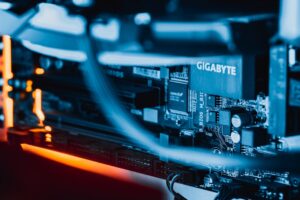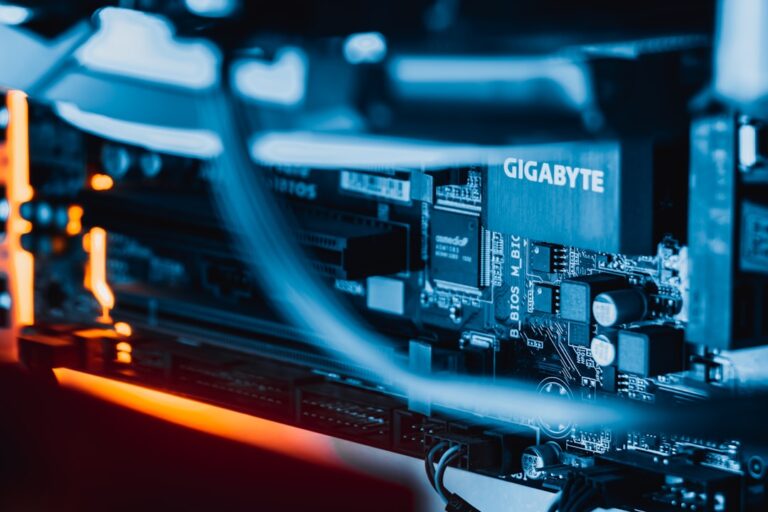The Internet of Things (IoT) has revolutionized the way we interact with technology, creating a network of interconnected devices that communicate and share data seamlessly. At the heart of this ecosystem lies the IoT gateway, a critical component that facilitates communication between various devices and the cloud. An IoT gateway acts as a bridge, enabling devices with different protocols and standards to connect and exchange information.
This intermediary role is essential in a world where devices range from simple sensors to complex machinery, each with its own communication requirements. IoT gateways are not merely conduits for data; they also perform essential functions such as data processing, filtering, and protocol translation. By managing the flow of information between edge devices and cloud services, gateways help optimize network performance and reduce latency.
As the number of connected devices continues to grow exponentially, the importance of IoT gateways becomes increasingly evident. They serve as the backbone of smart homes, industrial automation, healthcare systems, and smart cities, ensuring that data flows efficiently and securely across diverse environments.
Key Takeaways
- IoT gateway serves as a bridge between IoT devices and the cloud, enabling communication and data transfer.
- IoT gateway plays a crucial role in connecting and managing diverse IoT devices, ensuring seamless integration and interoperability.
- IoT gateway facilitates data collection, aggregation, and analysis, providing valuable insights for decision-making and optimization.
- Security and privacy are major concerns with IoT gateway, requiring robust measures to safeguard data and prevent unauthorized access.
- IoT gateway is widely used in industrial applications for monitoring, control, and automation, improving efficiency and productivity.
The Role of IoT Gateway in Connecting Devices
The primary function of an IoT gateway is to connect various devices within an IoT ecosystem, enabling them to communicate effectively. This is particularly important given the diversity of devices and communication protocols in use today. For instance, a smart thermostat may use Wi-Fi for connectivity, while a temperature sensor might rely on Zigbee or LoRaWAN.
An IoT gateway can bridge these differences by translating protocols and ensuring that data from one device can be understood by another, regardless of their underlying technologies.
They can provide a centralized point for monitoring device status, updating firmware, and managing security settings.
This capability is crucial in large-scale deployments where manually managing each device would be impractical. For example, in a smart agricultural setting, an IoT gateway can connect soil moisture sensors, weather stations, and irrigation systems, allowing farmers to monitor conditions in real-time and make informed decisions about resource allocation. By streamlining device connectivity and management, IoT gateways enhance operational efficiency and enable more responsive systems.
The Importance of IoT Gateway in Data Collection and Analysis

Data collection is a fundamental aspect of any IoT deployment, and IoT gateways play a pivotal role in this process. They aggregate data from multiple devices before transmitting it to cloud platforms or local servers for analysis. This aggregation is vital because it reduces the amount of data that needs to be sent over the network, thereby conserving bandwidth and minimizing costs.
For instance, an IoT gateway can filter out redundant or irrelevant data from a fleet of connected vehicles, sending only the most pertinent information to the cloud for further analysis. In addition to data aggregation, IoT gateways often incorporate edge computing capabilities. This means they can perform preliminary data processing locally before sending it to the cloud.
By analyzing data at the edge, gateways can provide real-time insights and reduce latency in decision-making processes. For example, in a smart manufacturing environment, an IoT gateway can analyze machine performance data on-site to detect anomalies or predict maintenance needs without waiting for cloud processing. This capability not only enhances operational efficiency but also enables proactive maintenance strategies that can save time and resources.
Security and Privacy Concerns with IoT Gateway
| Concerns | Metrics |
|---|---|
| Data Encryption | Percentage of IoT gateways using encryption protocols |
| Access Control | Number of unauthorized access attempts to IoT gateways |
| Privacy Protection | Percentage of IoT gateways implementing privacy protection measures |
| Vulnerability Patching | Time taken to patch vulnerabilities in IoT gateways |
As with any technology that involves data transmission and connectivity, security and privacy are paramount concerns for IoT gateways. These devices often serve as entry points into larger networks, making them attractive targets for cyberattacks. A compromised gateway could potentially expose sensitive data from all connected devices or allow unauthorized access to critical systems.
Therefore, implementing robust security measures is essential to protect both the gateway itself and the broader IoT ecosystem. To mitigate security risks, manufacturers must incorporate features such as encryption, secure authentication protocols, and regular firmware updates into their gateways. For instance, using Transport Layer Security (TLS) can help encrypt data transmitted between devices and the gateway, ensuring that sensitive information remains confidential during transit.
Additionally, employing strong authentication mechanisms—such as multi-factor authentication—can help prevent unauthorized access to the gateway’s management interface. As organizations increasingly rely on IoT solutions for critical operations, prioritizing security in gateway design and deployment becomes non-negotiable.
IoT Gateway in Industrial Applications
The industrial sector has been one of the early adopters of IoT technology, leveraging gateways to enhance operational efficiency and drive innovation. In manufacturing environments, IoT gateways connect machines, sensors, and control systems to create a cohesive network that enables real-time monitoring and automation. For example, a factory may deploy an IoT gateway to connect robotic arms, conveyor belts, and quality control sensors, allowing for seamless communication between these components.
One notable application of IoT gateways in industrial settings is predictive maintenance. By continuously monitoring equipment performance through connected sensors, gateways can analyze data patterns to predict when a machine is likely to fail. This proactive approach allows organizations to schedule maintenance before issues arise, reducing downtime and minimizing repair costs.
Furthermore, the insights gained from data analysis can inform process improvements and drive operational excellence across the organization.
The Future of IoT Gateway in Smart Cities

As urban areas continue to grow and evolve, the concept of smart cities has gained traction as a means to improve quality of life for residents while optimizing resource use. IoT gateways are integral to this vision, serving as the connective tissue that links various smart city applications—from traffic management systems to waste management solutions. For instance, an IoT gateway can aggregate data from traffic sensors, public transportation systems, and parking meters to provide city planners with real-time insights into urban mobility patterns.
In smart cities, gateways also facilitate citizen engagement by enabling applications that allow residents to report issues or access city services through their smartphones. For example, a citizen might use an app connected to an IoT gateway to report a malfunctioning streetlight or request information about public transportation schedules. By streamlining communication between citizens and city services, IoT gateways enhance civic engagement and foster a sense of community involvement in urban governance.
Challenges and Opportunities in IoT Gateway Development
Despite their critical role in the IoT ecosystem, the development of IoT gateways is not without challenges. One significant hurdle is ensuring interoperability among diverse devices and protocols. As new technologies emerge and existing standards evolve, maintaining compatibility across various systems can be complex.
Developers must continually adapt their gateways to accommodate new communication protocols while ensuring seamless integration with legacy systems. However, these challenges also present opportunities for innovation. The demand for more sophisticated gateways has spurred advancements in areas such as edge computing and artificial intelligence (AI).
By incorporating AI algorithms into gateways, developers can enhance data processing capabilities and enable smarter decision-making at the edge. For instance, an AI-enabled gateway could analyze traffic patterns in real-time to optimize traffic light timings dynamically. As organizations seek to harness the full potential of their IoT deployments, investing in advanced gateway technologies will be crucial for staying competitive in an increasingly connected world.
Harnessing the Potential of IoT Gateway for a Connected Future
The evolution of IoT gateways represents a significant milestone in the journey toward a fully connected future. As they continue to bridge the gap between devices and cloud services, their role will only become more critical across various sectors—from industrial applications to smart cities. By facilitating seamless communication, enhancing data collection and analysis capabilities, and addressing security concerns, IoT gateways are poised to drive innovation and efficiency in an increasingly interconnected world.
As we look ahead, it is essential for stakeholders—ranging from manufacturers to policymakers—to prioritize the development of robust and secure IoT gateways that can adapt to emerging technologies and evolving user needs. By doing so, we can unlock the full potential of the Internet of Things and create smarter environments that enhance our daily lives while promoting sustainability and efficiency on a global scale.
The Internet of Things (IoT) Gateway plays a crucial role in connecting various devices and sensors to the cloud, enabling seamless communication and data exchange. This technology is pivotal in the realm of smart homes, industrial automation, and healthcare, where efficient data processing and management are essential. For those interested in exploring the mathematical underpinnings that can enhance the efficiency and functionality of IoT systems, an insightful article on real-world examples of mathematical modelling can provide valuable perspectives. This article delves into how mathematical models are applied in various fields, offering a deeper understanding of the complex systems that IoT Gateways often interact with.





















+ There are no comments
Add yours